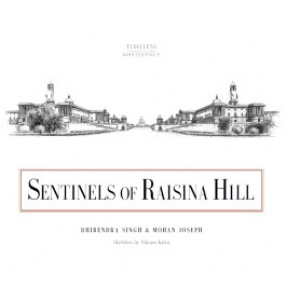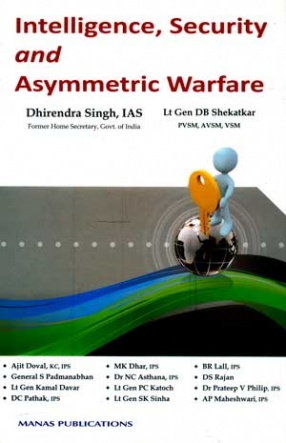Much has been written about the splendors of Delhi in books on history , architecture and travel, and of those who built, abandoned and rebuilt the city. There are those on Yudhisthira who founded Indraprastha, the Tomar Rajputs and Raja Dhilu, the kings of the Delhi Sultanate and the Great Mughals and finally the British before freedom was wrested from them and Delhi truly became India’s capital. There are also books on individual monuments and buildings which abound in the city.
‘Sentinels of Raisina Hill‘ follows this tradition, and is the first ever coffee table publication exclusively devoted to the Government of India’s Secretariat buildings – the North and South Blocks, as they are better known. It comes at a time when New Delhi completes hundred years since the British announced the transfer of the capital from Calcutta to Delhi at the Imperial Durbar held in Delhi in December of 1911. Although the siting , construction and architectural features of the Secretariat remain the focus of the book, it traces the historical context in which it evolved and became the culmination of the British architectural and administrative traditions, since the advent of the East India Company. It also examines the political and human drama that gradually unfolded as the buildings rose. Those were tumultuous times for India and the World. The partition of Bengal and its reunification a few years later had set in motion a chain of events which forever changed the history of India and particularly of Delhi. A spate of lively characters –Kings, Viceroys, Ministers, Architects, Soldiers, and Civil Servants come and go as the story progresses, till the buildings themselves literally come alive and join the narration. But the architects always held center stage – Baker and Lutyens – joined together by fate on a dusty hill on the plains of northern India, working uneasily together throughout their Indian sojourn.
The book unlike most others which rely on photographs is embellished with high quality black and white sketches that depict the architectural details of both the exteriors and interiors of the buildings. They are supplemented by archival prints of several of the older buildings which housed the offices of the East India Company and later the Government of India.
The book is authored by Dhirendra Singh, a former Union Home Secretary and Mohan Joseph a civil servant presently working in the Ministry of Finance. They have worked for many years in different Ministries located in the North and South Blocks and have extensively researched the historical background and architectural features of the buildings. The sketches are by Vikram Kalra, a Delhi based artist.
In 12th December 1911 at the Coronation Durbar, the King of England. George V announced that the imperial capital of India was to be shifted from Calcutta to Delhi. This declaration set in motion the ambitious project of transforming the contours of this ancient city into a new imperial seat of power and governance. The responsibility for the construction of important buildings of New Delhi was given to Sir Edwin L. Lutyens and Sir Herbert Baker.
Baker was commissioned to design the two wings of the Secretariat (North and South Blocks), which would house the offices of the Ministers and the bureaucracy. The buildings convey an ethereal lightness as also stately grandeur, blending the traditional Indian and English styles of architecture. The two blocks showcase the characteristic features of Indian architecture: the open canopies, chhatris, overhanging eaves or Chhajjas and the intricately carved stone and marble lattice screens or jaalis. Sandstones of the high plinths and the Dholpur stones for the walls and pillars add to the magnificence of these buildings. The tall columns and the magnificent domes and towers speak of their English heritage.
However to the architect Baker they were more than stone structures housing the secretariat. He placed them on the Raisina pedestal along with the Viceroy’s House as it gave architectural expression to a common dignity and distinction in the instrument of government as a united whole. And he saw the space between the two blocks, a pleasant garden as the temenos where dwells the lock of the Government of India. It was as if he wanted to sanctify this place appropriately so, for a secular Republic, which was still to come.








There are no reviews yet.